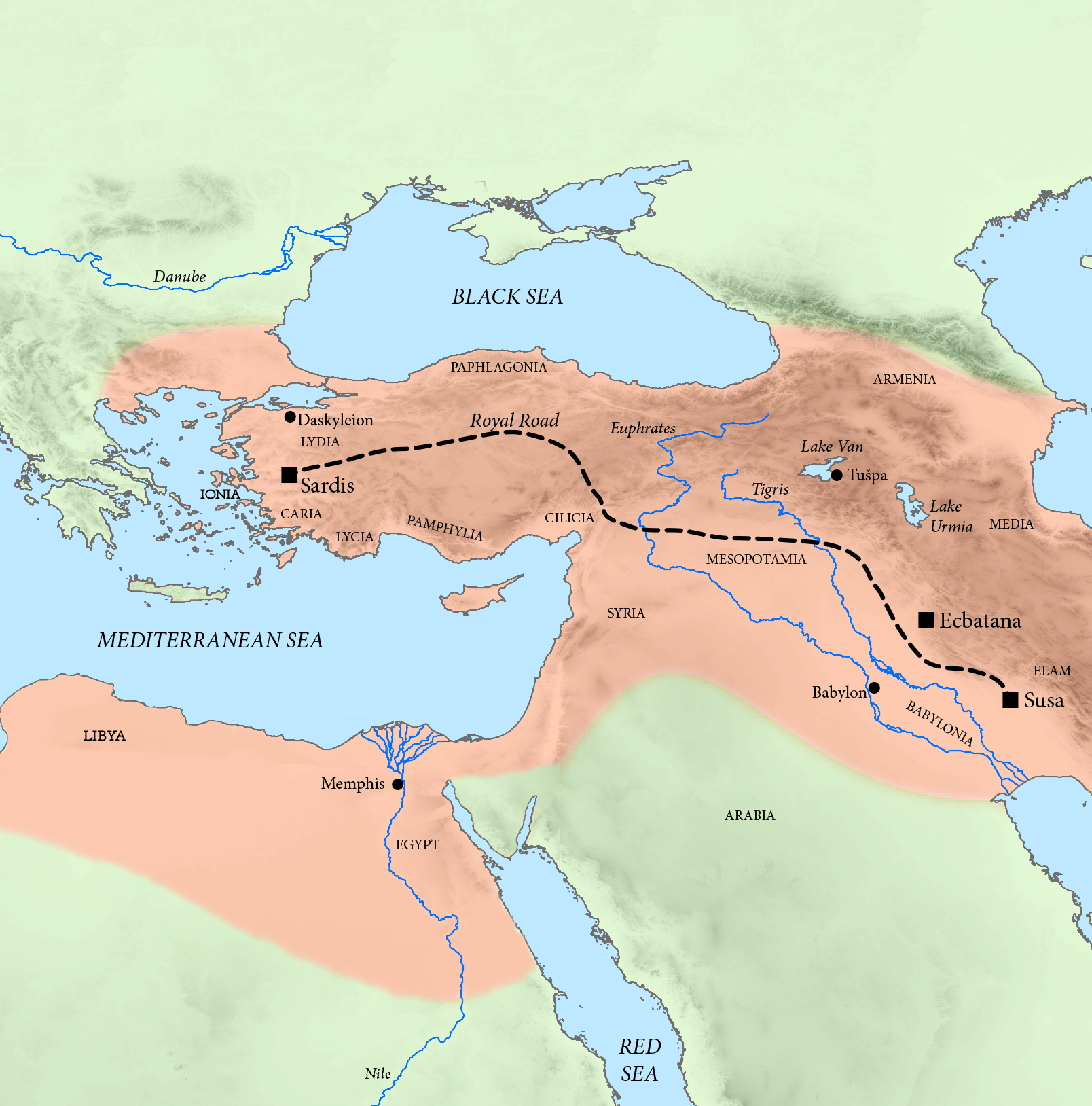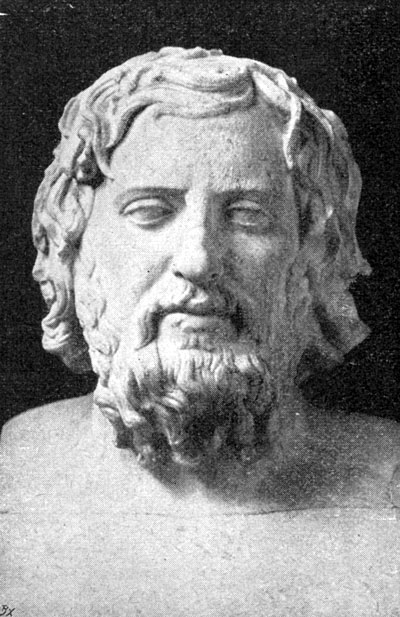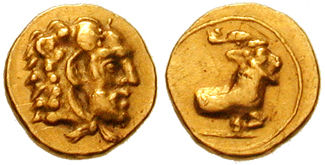|
Tiribazus
Tiribazus, Tiribazos or Teribazus (Old Iranian: ''Tīrībāzu'') (c.440 BC-370 BC) was an Achaemenid satrap of Western Armenia and later satrap of Lydia in western Anatolia. Satrap of Western Armenia He was highly regarded by the Persian King Artaxerxes II, and when he was present, so Xenophon tells us, no one else had the honour of helping the sovereign to mount his horse. Until 395 BC, Tiribazus served as the hyparch of Western Armenia. Satrap of Lydia He succeeded Tithraustes as satrap of Western Asia (Sardis). He was holding this office when, in 393 BC, Antalcidas was sent to negotiate, through him, a peace for Sparta with the Persian king. In 392 BC, while the Corinthian War was being contested amongst the Greek states, Tiribazus received envoys from the major belligerents of that war, and held a conference in which a proposal for ending the war was discussed. That discussion failed, but Tiribazus, convinced that Athens was becoming a threat to Persia in the Aegean, secr ... [...More Info...] [...Related Items...] OR: [Wikipedia] [Google] [Baidu] |
Orontes I
Orontes I (Old Persian: ''*Arvanta-''; died 344 BC) was a Bactrian nobleman, who served as a military officer of the Achaemenid Empire in the first half of the 4th-century BC. He first appears in 401 BC as the satrap of the satrapy of Armenia. There he participated in the Battle of Cunaxa, where he harassed the Ten Thousand following their retreat. In the same year, he married Rhodogune, a daughter of the King of Kings Artaxerxes II (). In the 380s BC, Orontes along with the satrap Tiribazus were assigned to lead the campaign against Evagoras I (), the king of Salamis in Cyprus. The campaign was initially successful, with Evagoras offering to make peace. However, after the negotiations between him and Tiribazus failed, Orontes accused the latter of deliberately prolonging the war and planning to declare independence. This led to Tiribazus' dismissal and imprisonment. This was followed by a chain of events which ultimately weakened the Persian forces, forcing Orontes to make peace ... [...More Info...] [...Related Items...] OR: [Wikipedia] [Google] [Baidu] |
Corinthian War
The Corinthian War (395–387 BC) was a conflict in ancient Greece which pitted Sparta against a coalition of city-states comprising Thebes, Athens, Corinth and Argos, backed by the Achaemenid Empire. The war was caused by dissatisfaction with Spartan imperialism in the aftermath of the Peloponnesian War (431–404 BC), both from Athens, the defeated side in that conflict, and from Sparta's former allies, Corinth and Thebes, who had not been properly rewarded. Taking advantage of the fact that the Spartan king Agesilaus II was away campaigning in Asia against the Achaemenid Empire, Thebes, Athens, Corinth and Argos forged an alliance in 395 BC with the goal of ending Spartan hegemony over Greece; the allies' war council was located in Corinth, which gave its name to the war. By the end of the conflict, the allies had failed to end Spartan hegemony over Greece, although Sparta was durably weakened by the war. At first, the Spartans achieved several successes in pitched battles ... [...More Info...] [...Related Items...] OR: [Wikipedia] [Google] [Baidu] |
Antalcidas
Antalcidas ( grc-gre, Ἀνταλκίδας; died BC), son of Leon, was an ancient Greek soldier, politician, and diplomat from Sparta. __NOTOC__ Life Antalcidas came from a prominent family and was likely a relation by marriage to the Spartan king Agesilaus II. Antalcidas is first recorded at the outset of the Corinthian War. Following the end of the Peloponnesian War after the destruction of the Athenian fleet at the Battle of Aegospotami in 405 BC, Sparta had launched a series of raids against the Persian satrapies of Asia Minor. Pharnabazus, satrap of Hellespontine Phrygia, finally responded by sending the Rhodian Timocrates to bribe the other Greek city states into declaring war on Sparta. Thebes rose up in 395 BC, eventually encouraging others to join in what became known as the Corinthian War. Persia was now on friendly terms with Athens and Pharnabazus permitted their disgraced general Conon to command his fleet of Phoenician and Cypriot ships in a ... [...More Info...] [...Related Items...] OR: [Wikipedia] [Google] [Baidu] |
Lydia (satrapy)
The Satrapy of Lydia, known as Sparda in Old Persian (Old Persian cuneiform 𐎿𐎱𐎼𐎭, ''Sparda''), was an administrative province ( satrapy) of the Achaemenid Empire, located in the ancient kingdom of Lydia, with Sardis as its capital. Achaemenid Satrapy Tabalus, appointed by Cyrus the Great, was the first satrap; however, his rule did not last long as the Lydians revolted. The insurrection was suppressed by general Mazares and his successor Harpagus. After Cyrus' death, Oroetus was appointed as satrap. Oroetus ruled during the reign of Cambyses, and after the chaotic period that followed the Persian king's death, he conquered the Greek isle of Samos, killing its ruler Polycrates. Due to his growing power, Darius the Great had Bagaeus kill Oroetus. Bagaeus himself may have become satrap for a short period, but the next rulers were Otanes and Darius' younger brother, Artaphernes. Ionian revolt (499 BCE) During the Ionian revolt in 499 BC, Sardis was sacked by the Greek ... [...More Info...] [...Related Items...] OR: [Wikipedia] [Google] [Baidu] |
Struthas
Struthas was a Persian satrap for a brief period during the Corinthian War. In 392 BC, he was dispatched by Artaxerxes II to take command of the satrapy of Sardis, replacing Tiribazus, and to pursue an anti-Spartan policy. Accordingly, Struthas raided territory held by the Spartans and their allies, prompting the Spartans to order their commander in the region, Thibron, to begin aggressive activity against Struthas. Thibron raided successfully for a time, but Struthas eventually succeeded in ambushing one of his raiding expeditions. Struthas slew Thibron in personal combat before his cavalry routed and destroyed the rest of the Spartan army save for a few survivors that escaped to nearby cities and more that were left back at the camp due to not learning of the expedition in time to partake. Thibron was then replaced by Diphridas, who rebuilt his army from the remnants of Thibron's and raided Struthas's territory successfully, even capturing his son-in-law, but achieved little r ... [...More Info...] [...Related Items...] OR: [Wikipedia] [Google] [Baidu] |
Anabasis (Xenophon)
''Anabasis'' (; grc-gre, Ἀνάβασις ; an "expedition up from") is the most famous work of the Ancient Greek professional soldier and writer Xenophon. It narrates the expedition of a large army of Greek mercenaries hired by Cyrus the Younger to help him seize the throne of Persia from his brother, Artaxerxes II, in 401 BC. The seven books making up the ''Anabasis'' were composed circa 370 BC. Though as an Ancient Greek vocabulary word, ''ᾰ̓νᾰ́βᾰσῐς'' means "embarkation", "ascent" or "mounting up", the title ''Anabasis'' is rendered in translation as ''The March Up Country'' or as ''The March of the Ten Thousand''. The narration of the army's journey across Asia Minor and Mesopotamia is Xenophon's best known work, and "one of the great adventures in human history". Authorship Xenophon, in his '' Hellenica'', did not cover the retreat of Cyrus but instead referred the reader to the ''Anabasis'' by "Themistogenes of Syracuse"—the tenth-century Suda also de ... [...More Info...] [...Related Items...] OR: [Wikipedia] [Google] [Baidu] |
Evagoras I
Evagoras or Euagoras ( grc, Εὐαγόρας) was the king of Salamis, Cyprus, Salamis (411–374 BC) in Cyprus, known especially from the work of Isocrates, who presents him as a model ruler. History He claimed descent from Teucer, the son of Telamon and half-brother of Ajax the Great, Ajax, and his family had long been rulers of Salamis, although during his childhood Salamis came under Phoenician control, which resulted in his exile. While in Cilicia, Evagoras gathered the support of 50 followers and returned secretly in 410, to gain possession of the throne. Expecting an eventual Achaemenid Empire, Persian response to recapture Cyprus, he cultivated the friendship of the Classical Athens, Athenians, and after Conon's defeat at the Battle of Aegospotami he provided him with a refuge. For a time he also maintained friendly relations with Achaemenid Empire, Persia, and secured the aid of Artaxerxes II for Athens against Sparta. He took part in the Battle of Cnidus of 394 BC which ... [...More Info...] [...Related Items...] OR: [Wikipedia] [Google] [Baidu] |
Peace Of Antalcidas
The King's Peace (387 BC) was a peace treaty guaranteed by the Persian King Artaxerxes II that ended the Corinthian War in ancient Greece. The treaty is also known as the Peace of Antalcidas, after Antalcidas, the Spartan diplomat who traveled to Susa to negotiate the terms of the treaty with the king of Achaemenid Persia. The treaty was more commonly known in antiquity, however, as the King's Peace, a name that reflects the depth of Persian influence in the treaty, as Persian gold had driven the preceding war. The treaty was a form of Common Peace, similar to the Thirty Years' Peace which ended the First Peloponnesian War. The end of the war By 387 BC, the central front of the Corinthian War had shifted from the Greek mainland to the Aegean, where an Athenian fleet under Thrasybulus had successfully placed a number of cities across the Aegean under Athenian control, and was acting in collaboration with Evagoras, the king of Cyprus. Since Evagoras was an enemy of Persia, an ... [...More Info...] [...Related Items...] OR: [Wikipedia] [Google] [Baidu] |
Autophradates
Autophradates (Old Persian: ; Ancient Greek: , lived 4th century BC) was a Persian Satrap of Lydia, who also distinguished himself as a general in the reign of Artaxerxes III and Darius III. Rule as a satrap of Lydia During the reign of the Artaxerxes II, Autophradates captured Artabazus, the satrap of Lydia and Ionia who had revolted against the Persian king, and made him his prisoner, but afterwards was forced to set him free. Autophradates was also directed by Artaxerxes to put down the rebellion of the satrap of Cappadocia Datames. He went with a large army, but was obliged to retreat with heavy loss. Autophradates later joined the Revolt of the Satraps. Resistance to Alexander the Great Autophradates participated to the Achaemenid resistance against the campaigns of Alexander the Great in Asia Minor. Together with Pharnabazus III he supported militarily and financial the king of Sparta Agis III who was organizing resistance against the Macedonians. After the death of ... [...More Info...] [...Related Items...] OR: [Wikipedia] [Google] [Baidu] |
Tissaphernes
Tissaphernes ( peo, *Ciçafarnāʰ; grc-gre, Τισσαφέρνης; xlc, 𐊋𐊆𐊈𐊈𐊀𐊓𐊕𐊑𐊏𐊀 , ; 445395 BC) was a Persian soldier and statesman, Satrap of Lydia and Ionia. His life is mostly known from the works of Thucydides and Xenophon. According to Ctesias, he was the son of Hidarnes III and therefore the great grandson of Hydarnes, one of the six conspirators who had supported the rise of Darius the Great. Etymology ''Čiçafarnah'' (''čiça'' + ''farnah'') "with shining splendor": ''čiça'' is from the Proto-Indo-European adjective ''(s)koitrós'' 'bright'; ''farnah'' is equivalent to Avestan '' xvarənah'' 'fortune', 'glory', which appears as 'luminous'. ''čiθra'' means nature, specifically the animate nature. ''Čiça-'' is the Old Persian form of the Old Iranian term ''Čiθra-'', which is reflected in the Median form of the name, ''*Čiθrafarnah-'' ( grc, Τετραφέρνης). Family and early life Tissaphernes was born in 445 BC. ... [...More Info...] [...Related Items...] OR: [Wikipedia] [Google] [Baidu] |
Tithraustes
Tithraustes ( Old Persian: ; Ancient Greek: ) was the Persian satrap of Sardis for several years in the early 4th century BC. Due to scanty historical records, little is known of the man or his activities. He was sent out from Susa to replace Tissaphernes in 395 BC, and, after arresting his predecessor, executed him. To remove the threat to his satrapy posed by the Spartan army of Agesilaus, Tithraustes persuaded Agesilaus to march north into the satrapy of Pharnabazus, and provided him with money for the march. After this event, no further actions of his can be traced. Xenophon states that it was Tithraustes who dispatched Timocrates of Rhodes to Greece to stir up opposition to Sparta, but this seems unlikely for chronological reasons.Fine, ''The Ancient Greeks'', 548. See also the contradictory account in the ''Hellenica Oxyrhynchia ''Hellenica Oxyrhynchia'' is an Ancient Greek history of classical Greece in the late 5th and early 4th centuries BCE, of which papyrus fra ... [...More Info...] [...Related Items...] OR: [Wikipedia] [Google] [Baidu] |
Salamis, Cyprus
Salamis ( grc, Σαλαμίς, el, Σαλαμίνα, tr, Salamis) is an ancient Greek city-state on the east coast of Cyprus, at the mouth of the river Pedieos, 6 km north of modern Famagusta. According to tradition, the founder of Salamis was Teucer, son of Telamon, king of the Greek island of Salamis, who could not return home after the Trojan war because he had failed to avenge his brother Ajax. History Early history The earliest archaeological finds go back to the eleventh century BC (Late Bronze Age III). The copper ores of Cyprus made the island an essential node in the earliest trade networks, and Cyprus was a source of the Orientalizing Period, orientalizing cultural traits of mainland Greece at the end of the Greek Dark Ages, hypothesized by Walter Burkert in 1992. Children's burials in Canaanite jars indicate a Phoenicia, Phoenician presence. A harbour and a cemetery from this period have been excavated. The town is mentioned in Assyrian inscriptions as one of th ... [...More Info...] [...Related Items...] OR: [Wikipedia] [Google] [Baidu] |
.jpg)





